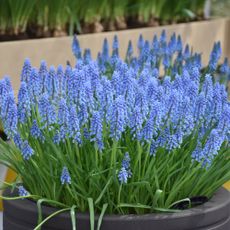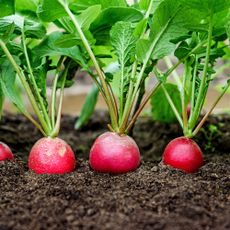Learn About Lakota Squash History

Who doesn't love a good winter squash? You can brighten up your table with it, you can bake it or puree it into a soup, or you can store it in your basement until spring. You can even do all three with the same squash! The Lakota is a particularly beautiful and tasty squash that gets rave reviews from the few people who are in the know. But, for some reason, the Lakota winter squash doesn't have nearly the same following as, say, its butternut and acorn cousins.
Lakota Squash History
The Lakota squash history is a fascinating and deeply American one. It was cultivated for centuries by the Native American tribes of the Missouri Valley, including the Lakota, from whom it gets its name. Its introduction into the gardens of white settlers has a strikingly short and easily traced path. As early as 1820, soldiers at Fort Atkinson in Nebraska are documented as growing the squash and storing it for the winter. In the 1870s, soldiers in the newly-founded Fort Robinson across the state begged some seeds off of Fort Atkinson, and the squash's production among settlers effectively doubled. Alfred Iossi, an employee at Fort Atkinson, took some of the seeds to give to his sister, Martha Newman. Martha grew the seeds for years, and gave some to a man who went by A.G., who donated them to the University of Nebraska.
Lakota Winter Squash Growing
Those seeds are the ancestors of the ones we can grow today. However, one notable aspect of squash is how easily they can be hybridized. As Martha Newman grew her Lakota squash over the years, they deviated from the ones originally described at Fort Atkinson, probably because of cross pollination with her hubbard squash. By the time the seeds reached the University of Nebraska, they were very different from the originals. Dr. D.P. Coyne at the University of Nebraska worked to breed a stable variety, descended from and similar to the original that we can buy and grow today. So why not give it a shot? These squash grow well in drained, airy soil with lots of sunlight. They can really spread, so make sure they have some room, or consider trellising them. They should mature in 85-105 days, and continue producing into the autumn.
Gardening tips, videos, info and more delivered right to your inbox!
Sign up for the Gardening Know How newsletter today and receive a free copy of our e-book "How to Grow Delicious Tomatoes".

The only child of a horticulturist and an English teacher, Liz Baessler was destined to become a gardening editor. She has been with Gardening Know how since 2015, and a Senior Editor since 2020. She holds a BA in English from Brandeis University and an MA in English from the University of Geneva, Switzerland. After years of gardening in containers and community garden plots, she finally has a backyard of her own, which she is systematically filling with vegetables and flowers.
-
 Ultimate Potted Flowers For Spring: 8 Brilliant Blooming Options for Spring Containers
Ultimate Potted Flowers For Spring: 8 Brilliant Blooming Options for Spring ContainersCelebrate the most uplifting of seasons with the most dazzling container flowers imaginable. Here, we present some of the loveliest potted flowers for spring…
By Tonya Barnett
-
 Never Use Homemade Compost Until It Passes This Simple Radish Test
Never Use Homemade Compost Until It Passes This Simple Radish TestThe radish test is a foolproof trick for knowing whether your homemade compost is ready for planting – or if it could harm the health of your plants.
By Mary Ellen Ellis